Comparison between seventh/eighth and ninth emissions
Since several years, the Bank of Mexico has been printing in banknotes sensible marks to the tact. Nevertheless, these were diminishing their effectiveness with the use, for that reason in the new family all the denominations have different sizes.
With respect to the security of notes, obviously the technology for graphical reproductions improves continuously and it is more and more accessible the public in general. That has caused a gradual increase in the number of detected false pieces, happening of 72 through each million notes in circulation in 2002, to 115 in 2005. This increase made advisable improve the characteristics of security of notes to make difficult its imitation.
With that reason :
The existing denominations remained already, each one of which having colors similar to the present ones, fitting them to avoid confusions.
The two lower denominations (20 and 50 pesos) were printed in polymer and the rest (100, 200, 500 and 1000 pesos) were printed in paper.
The notes were done of a different size for each denomination.
| SEVENTH/EIGHTH | NINTH | DIFERENCE | |
 |
 |
-9 mm | |
 |
 |
-2 mm | |
 |
 |
-21 mm | |
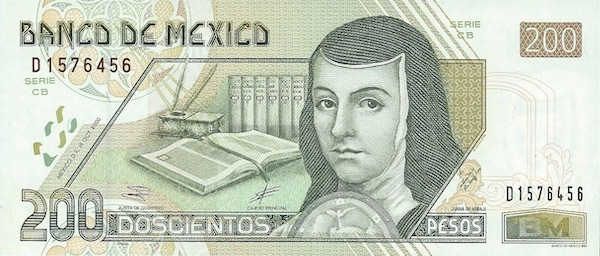 |
 |
-14 mm | |
 |
 |
-7 mm | |
 |
 |
0 mm |
The Perfect Register, representing the denomination of the banknotes from the seventh and eighth emissions, continues to exist in the ninth one but the figures that complement each other are the map of the Mexican Republic and the compass rose.
| $ 20 | $ 50 | $ 100 | $ 200 | $ 500 | $ 1000 | |
| Seventh/Eighth | 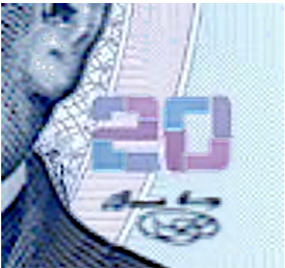 |
 |
 |
 |
 |
 |
 |
 |
 |
 |
 |
 |
|
| Ninth |  |
 |
 |
 |
 |
 |
 |
 |
 |
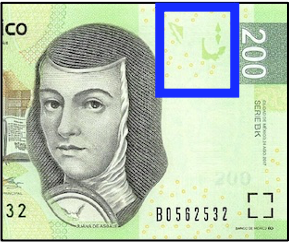 |
 |
 |